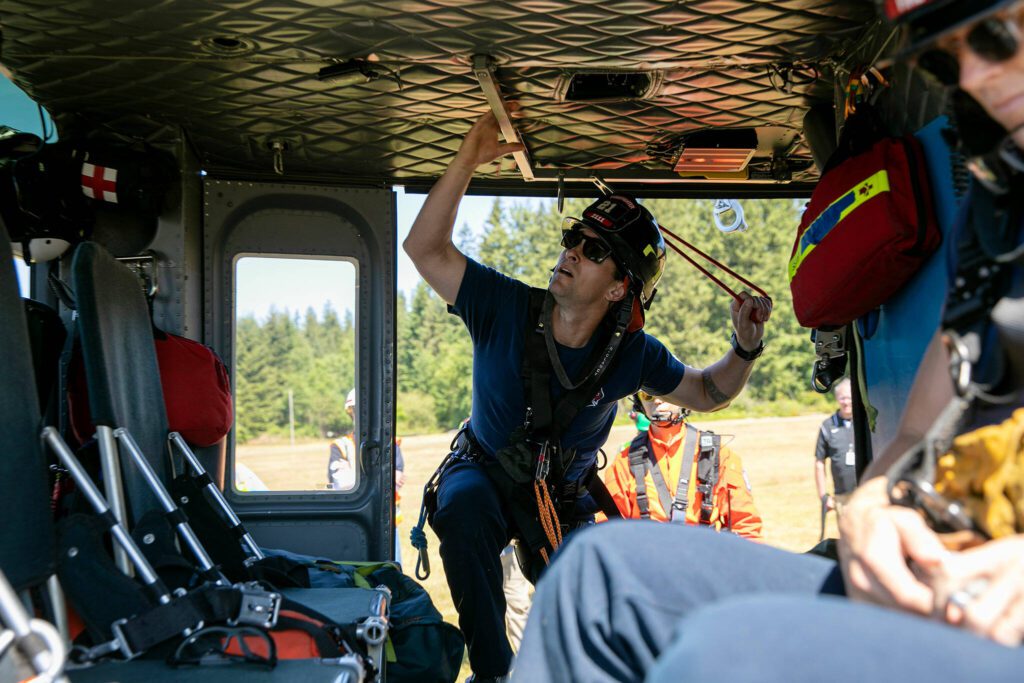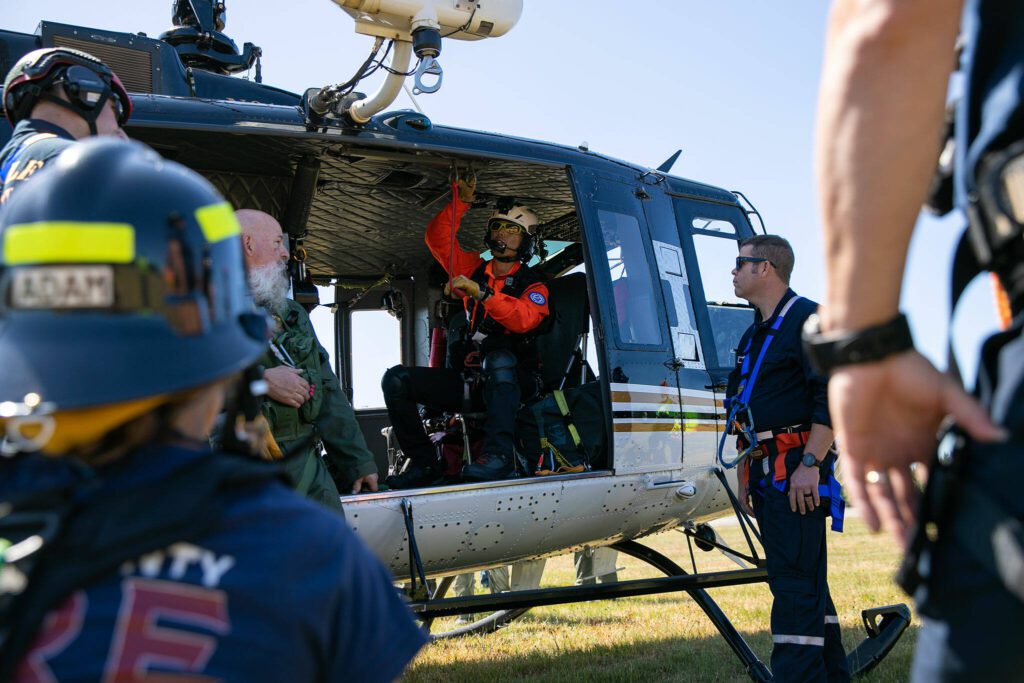EVERETT — In 2014, first responders from all around the Pacific Northwest converged on Snohomish County for weeks when a major mudslide hit the rural community of Oso, killing 43 people.
“There weren’t any signs of a home left. I couldn’t believe it,” said Bill Quistorf, chief pilot for the Snohomish County Sheriff’s Office.
On Tuesday, the Northwest Aviation Consortium coordinated a disaster response to prepare for the next disaster on the same scale, if not bigger.
“We know from disasters like (the) Oso Slide how critical this training is,” Arlington city spokesperson Mandy Kruger said in an email.
Fire, police and naval agencies across Snohomish and King counties joined in a series of scenarios: water rescues, building searches, structural collapses and more, Quistorf said.
The training generally revolved around coordinating between agencies in the first 72 hours following an earthquake or tsunami.
At the Arlington Municipal Airport, a 20-mile drive west of the Oso tragedy, regional firefighters worked in teams of four with a sheriff’s office helicopter, in a simulation rescuing people from a fire in a high-rise building.
“Most of the time with normal buildings, we have really tall ladders to get to them. But once you get to downtown, our ladders are only 100 feet tall,” Seattle firefighter Mike Dulas said. “In high rises, when they catch on fire, it’s a really big deal and there’s a lot of people in there.”
For some South County Fire crews, this training was a “serious left turn” from their day-to-day work on the ground, firefighter Anthony Casanas said.
“We’re all within a couple years new to South County and really new to the tech rescue team, so this is a pretty neat opportunity for all of us,” Casanas said.
Areas in the grass field were marked as rooftops. Teams practiced moving equipment and people from one high-rise to another.
To transport supplies, equipment was loaded into a large gray net known as a “sling load.” The helicopter then hovered over the load, and a responder hooked it up to the belly of the aircraft to transfer it from one rooftop to another, Seattle firefighter Aaron McCandless said. Sling loads are often used in wildfires or major natural disasters.
“The helicopter gives us a lot of versatility,” McCandless said. “This is a really fast, safe operation where we can get tools to the workers that need to go to work.”
Similar to a sling load, responders use an “upside-down umbrella” device known as an Air Tactical Evacuation Platform that can hold up to 10 people, Snohomish County Search and Rescue medic Jeff Brown said. In disaster scenarios, a helicopter can hover 2 feet over a dangerous area and load people onto the platform to safely drop them off.
Brown said the county obtained the Air TEP in 2014 following the Oso mudslide.
“In Oso, where they couldn’t land in the mud, we could load people and hover right above the water — get them in and out,” Brown said.
On Tuesday, responders practiced loading on and off the platform as the sheriff’s office helicopter lifted them into the air.
The collaboration is crucial for understanding the capacities of each agency, Quistorf said.
For civilians who want to prepare for the next disaster, Quistorf recommended undergoing the county’s Community Emergency Response Team training program that teaches basic survival skills in an emergency situation.
Maya Tizon: 425-339-3434; maya.tizon@heraldnet.com; Twitter: @mayatizon.
Talk to us
> Give us your news tips.
> Send us a letter to the editor.
> More Herald contact information.































